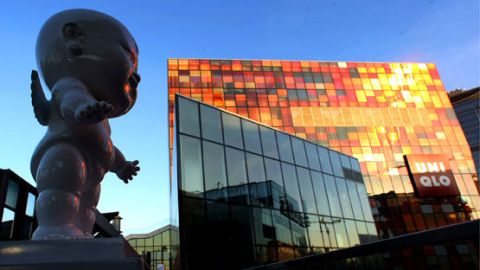The Design Republic of China: What Happens When the New Export is an Aesthetic?

What will it take for the Western world to change its mind about what “Made in China” signifies? Unfortunately, for most people, those three words – “Made in China” – carry all kinds of unintended economic baggage: cheap, shoddily-made goods; the loss of tens of thousands U.S. jobs; inhuman factory conditions in urban sweatshops; and a giant export machine that is causing a massive trade deficit for the U.S. But what if “Made in China” was associated with design, creativity and innovation?
In its February 2011 issue, design-savvy Monocle magazine recently explored several of the key players who are reversing long-held notions of Chinese design and creativity. Japanese design powerhouse Muji, for example, recently went on a design shopping expedition in China, looking for everyday household items that could be adapted into the perfect “un-branded” commercial goods. By the end of the process, Muji had settled on 31 Chinese goods that could be part of a new range sold within Japan: “Making a virtue out of ‘Made in China’ was something new for Muji and its Japanese customers. It wasn’t so easy at first, but the image of Chinese products being bad is changing…”
What’s changing is that it’s not just “Western” design firms who are hunting around the Chinese market, looking for opportunities and inspiration. For perhaps the first time in history, homegrown Chinese firms are looking to export their design aesthetic to other parts of Asia, Europe and even the U.S. For example, Jia Inc. is trying to convince the world that it needs objects designed in China. Already, reports Monocle, Jia home products have been scooped up by five-star hotels, top chefs (including Alain Ducasse!), world-class museums, and even Le Bon Marche department store in Paris.

“Beijing Design Week is an international design event aimed at implementing the concept of innovative country, promoting the creative industries’ development in Beijing and building Beijing into a capital of design through design. In order to make Beijing Design Week a comprehensive design week with the biggest international influence in China, the event will be held during the National Day Holidays every year since 2011. Being positioned as a core part of the capital culture, Beijing Design Week is becoming a tribute from China’s design and creative industries to the National Day. Beijing Design Week is composed of five components, namely summit forums, design exhibitions, guest city of honor, design tours and design awards. In the meantime, Beijing Design Week plans to join hands with an authoritative design education institution every year to jointly organize internationally forward-looking high-end academic events.”
So what happens when a country’s chief export is really an aesthetic? First of all, it’s easy to see that protectionists in the U.S. will have a lot less to be worried about. (Who’s afraid of Muji, after all?) One could argue that China’s economic engine, based on manufacturing and exports, has already reached its peak. As China grapples with (gasp!) single-digit year-over-year economic growth rates and continuing U.S. pressure to change the current yuan-dollar FX dynamic, it’s almost certain that China’s leaders will look for new ideas about creativity and innovation to prime the economic pump.
In a Q&A sidebar attached to the Monocle article, in fact, Liu Guanzhong, a Chinese professor at Tsinghua University, notes that leaders within the Chinese government are already working on new educational reforms and a brand-new industrialization initiative that rewards design and innovation. Maybe 2011 is the year we keep our eyes out for new China design & innovation icons as they make their way to places like Dubai, London and New York.
[images via: Beijing Design Week]





